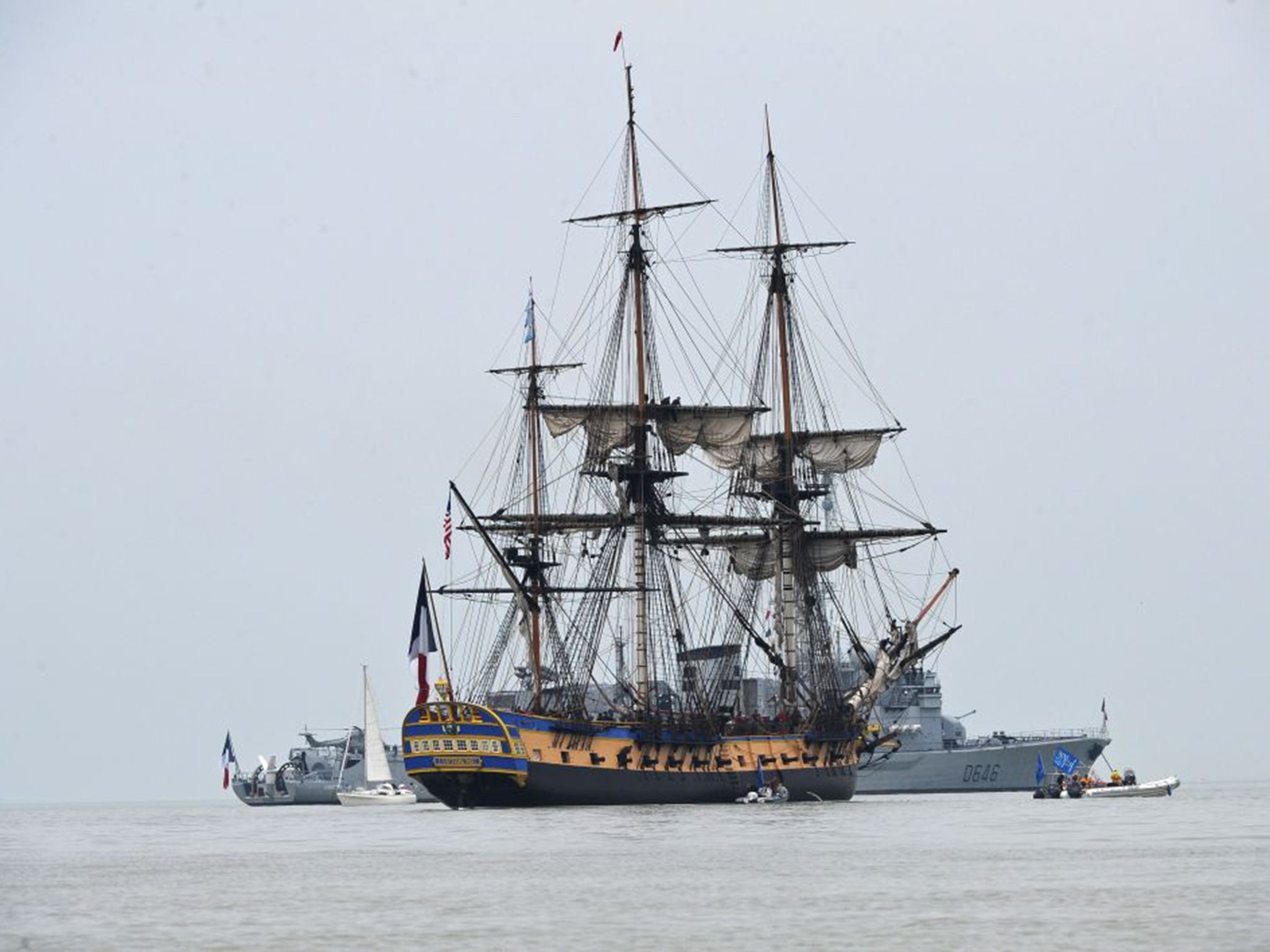Replica frigate sets sail for Yorktown to celebrate France's role in the American war of independence
The original Hermione participated in a 'critical' French naval blockade and the British surrendered to George Washington

Your support helps us to tell the story
From reproductive rights to climate change to Big Tech, The Independent is on the ground when the story is developing. Whether it's investigating the financials of Elon Musk's pro-Trump PAC or producing our latest documentary, 'The A Word', which shines a light on the American women fighting for reproductive rights, we know how important it is to parse out the facts from the messaging.
At such a critical moment in US history, we need reporters on the ground. Your donation allows us to keep sending journalists to speak to both sides of the story.
The Independent is trusted by Americans across the entire political spectrum. And unlike many other quality news outlets, we choose not to lock Americans out of our reporting and analysis with paywalls. We believe quality journalism should be available to everyone, paid for by those who can afford it.
Your support makes all the difference.History has been repeated after a replica French navy frigate set sail for the United States, to retrace a voyage made during the American Revolution of the 18th century.
It was 235 years ago that French General Lafayette boarded the original Hermione and made the transatlantic journey to support Americans fighting for independence.
The new Hermione has departed from Rochefort, France, after more than a decade in construction. It will reach Yorktown, Virginia, on 5 June – the place where, in 1781, the original ship participated in a French naval blockade and the British surrendered to George Washington. It was a move that forged a historic alliance between France and America.
Before its departure, President François Hollande boarded the ship and met some of the crew. He said the vessel was the “best answer” France had for those who thought it “futile to dream”.
The President was expected to give Captain Yann Cariou “The Declaration of the Rights of Man and of the Citizen”, a document that sits at the heart of the French Revolution. It will be handed to President Obama when the frigate reaches the United States.
Tens of thousands of people turned up for the departure ceremony. The 3,819-mile journey will be made by 18 professional sailors and 54 volunteers.
The wreck of the original Hermione was found in the late 1980s off the coast of France. The new ship was built using plans from the British-captured sister vessel, the Concorde , and 18th-century shipbuilding methods. The 65-metre ship has three masts, and the project cost €25m (£18m).
David Lincoln Ross, editorial director of the Friends of Hermione-Lafayette in America, one of the organisers, said he hoped the voyage would help to educate Americans on “the importance of the lasting friendship between France and America… and to help Americans better appreciate the role that the French played”.
General Lafayette set off for America with troops after persuading King Louis XVI to provide military and financial support.
Mr Ross said General Lafayette was not well enough known in the US, but the voyage would create an educational legacy to last after the Hermione returns to France in July.
Miles Young, president of the Friends of Hermione-Lafayette, said France was “fundamental” in the American War of Independence. “The role of the French navy of blockading the British… was totally critical,” he said.
“The idea was always to celebrate [the Hermione’s] role in the war of independence. This project was conceived of partly as a historical venture, but partly to help generate employment and tourism to Rochefort, which was a pretty … depressed part of south-western France.”
The ship will stop at 11 ports in the US, including Washington DC, Philadelphia, New York in time for Independence Day on 4 July, and Boston.
Volunteer Adam Hodges-LeClaire, a US citizen, wanted to make the voyage as authentic as possible, right down to his clothing.
“I wanted to push this experiment to its logical extreme, so I prepared a full 18th-century wardrobe based on after-death inventories I found in the Paris archives and artwork from the period,” he said.
Join our commenting forum
Join thought-provoking conversations, follow other Independent readers and see their replies
0Comments